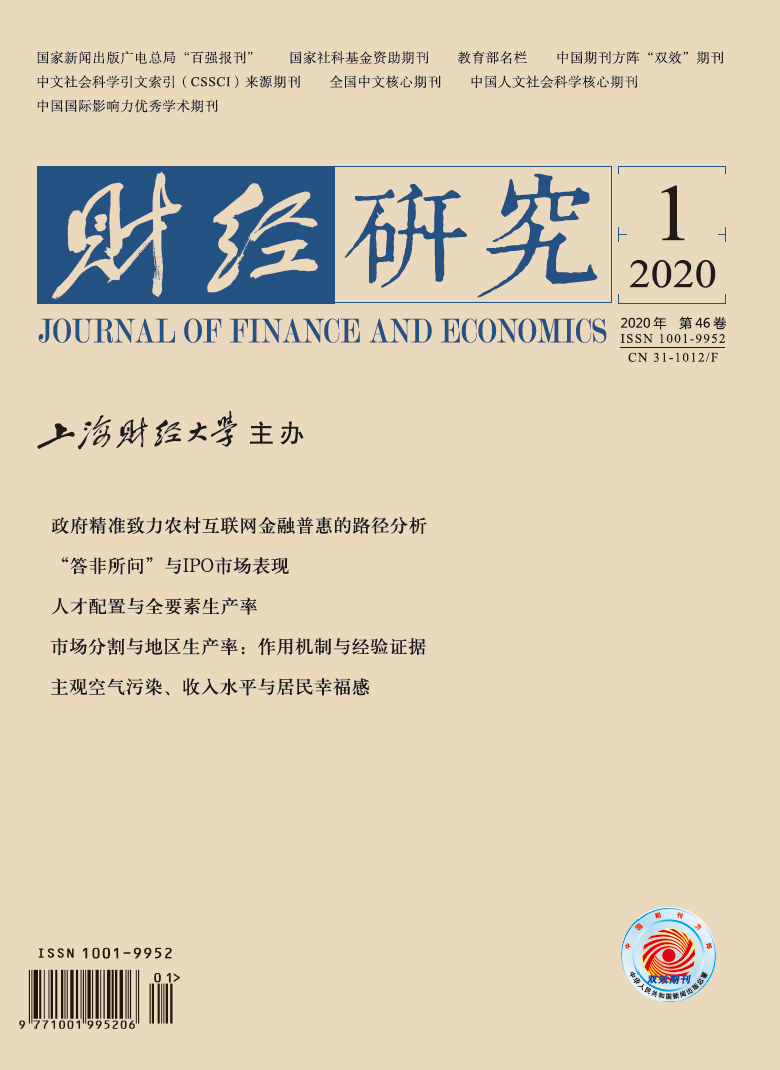Based on the provincial panel data of China covering the period 1998-2016, this paper analyzes the impact and transmission mechanism of the commodity market segmentation and factor market segmentation on regional productivity by using the dynamic spatial panel model and mediating effect model. The results show that: Labor market segmentation is the strongest, followed by commodity market, and capital market segmentation is the weakest. The commodity market segmentation is inverted U-shaped relationship with regional productivity, namely the low intensity of commodity market segmentation is conducive to regional productivity, but in the long run, more than a certain intensity of it will have an obvious effect. Currently, the commodity market segmentation of most provinces in China is within the threshold value of improving regional productivity. However, factor market segmentation hinders regional productivity growth. Further influence mechanism test finds that different types of market segmentation have different transmission paths for regional productivity: In commodity market segmentation, market competition, demand scale and technology spillover are all important ways to affect regional productivity, and demand scale plays a leading role; factor market segmentation will affect regional productivity through resource allocation and enterprise decision-making behavior, among which the resource allocation effect plays a major role.
 / Journals / Journal of Finance and Economics
/ Journals / Journal of Finance and EconomicsJournal of Finance and Economics
LiuYuanchun, Editor-in-Chief
ZhengChunrong, Vice Executive Editor-in-Chief
YaoLan BaoXiaohua HuangJun, Vice Editor-in-Chief
Market Segmentation and Regional Productivity: Theoretical Mechanism and Empirical Evidence
Journal of Finance and Economics Vol. 46, Issue 01, pp. 96 - 110 (2020) DOI:10.16538/j.cnki.jfe.2020.01.007
Summary
References
Summary
[1]Cai F. Total factor productivity can extend the traditional demographic dividend[N]. Beijing Daily, 2015-11-23. (In Chinese)
[2]Cao C F, Zhang T T, Liu X M. Does market segmentation boost state-owned enterprises’ competitive position in product market?[J]. Journal of Financial Research, 2018, (3): 121-136. (In Chinese)
[3]Fang G, Wang X L, Zhu H P. Neri index of marketization of China’s province 2011 report[M]. Beijing: Economic Science Press, 2011. (In Chinese)
[4]Gui Q H, Chen M, Lu M, et al. Whether China’s domestic commodity market tends to be segmented or integrated: An analysis based on relative price method[J]. The Journal of World Economy, 2006, (2): 20-30. (In Chinese)
[5]Hu B, Wan D X. How does industrial agglomeration affect the technology innovation modes of manufacturing enterprises? The reason for the formation of “innovation inertia”[J]. Journal of Finance and Economics, 2017, (11): 30-43. (In Chinese)
[6]Huang Z L, Wang J Y. Local protectionism and market fragmentation: An experience study in China[J]. China Industrial Economy, 2006, (2): 60-67. (In Chinese)
[7]Jian Z, Tan L P, Lv D G, et al. Creativity and destructiveness of market competition and upgrading of technology[J]. China Industrial Economy, 2017, (5): 16-34. (In Chinese)
[8]Li S T, Hou Y Z, Liu Y Z, et al. The analysis on survey of local protection in China domestic market[J]. Economic Research Journal, 2004, (11): 78-84. (In Chinese)
[9]Liu R M, Kang Y K, Huang W Q. Distortion of employment market, accumulation of human capital and class differentiation[J]. Economic Perspectives, 2017, (8): 74-87. (In Chinese)
[10]Lu M, Chen Z. Fragmented growth: Why economic opening may worsen domestic market segmentation[J]. Economic Research Journal, 2009, (3): 42-52. (In Chinese)
[11]Lu Z Y, L S S. Dual-threshold effect about technology spillovers of FDI and the difference of regional innovation capability[J]. The Journal of Quantitative & Technical Economics, 2012, (5): 75-88. (In Chinese)
[12]Luo D M, Li Y, Shi J C. Factor distortion, misallocation and productivity[J]. Economic Research Journal, 2012, (3): 4–14. (In Chinese)
[13]Song J, Wang J. Will “twisted hand” worsen the “cost disease”? Measurement and analysis of decomposition framework[J]. Finance & Trade Economics, 2018, (2): 136-152. (In Chinese)
[14]Song M L, Jin P Z. Regional protection, resource misallocation and environmental welfare performance[J]. Economic Research Journal, 2016, (12): 47-61. (In Chinese)
[15]Wang X L, Fan G, Yu J W. Marketization index of China’s provinces: Neri report 2016[M]. Beijing: Social Sciences Academic Press, 2017. (In Chinese)
[16]Wen Z L, Ye B J. Analyses of mediating effects: The development of methods and models[J]. Advances in Psychological Science, 2014, (5): 731-745. (In Chinese)
[17]Xu B C, Xie J G. Market segmentation and firm productivity: Evidence from Chinese manufacturing firms[J]. The Journal of World Economy, 2016, (1): 95-122. (In Chinese)
[18]Ye N H, Zhang B W. Local protectionism, ownership and firms’ market expansion choices[J]. The Journal of World Economy, 2017, (6): 98-119. (In Chinese)
[19]Yu M G, Hui Y F, Pan H B. Political connections, rent seeking, and the fiscal subsidy efficiency of local governments[J]. Economic Research Journal, 2010, (3): 65-77. (In Chinese)
[20]Zhang J, Zhou X Y, Li Y. Does factor market distortion barrage Chinese firms’ R&D?[J]. Economic Research Journal, 2011, (8): 78-91. (In Chinese)
[21]Bloom N, Schankerman M, van Reenen J. Identifying technology spillovers and product market rivalry[J]. Econometrica, 2013, 81(4): 1347-1393. DOI:10.3982/ECTA9466
[22]Bollard A, Klenow P J, Li H Y. Entry costs rise with development[R]. Working Paper No.518, 2014.
[23]Elhorst J P. Dynamic spatial panels: Models, methods and inferences[J]. Journal of Geographical System, 2012, 14(1): 5-18. DOI:10.1007/s10109-011-0158-4
[24]Schmookler J. Invention and economic growth[M]. Boston: Harvard University Press, 1996.
Cite this article
Huang Zelin, Yao Tingting. Market Segmentation and Regional Productivity: Theoretical Mechanism and Empirical Evidence[J]. Journal of Finance and Economics, 2020, 46(1): 96-110.
Export Citations as:
For
ISSUE COVER
RELATED ARTICLES





 6865
6865  11711
11711

